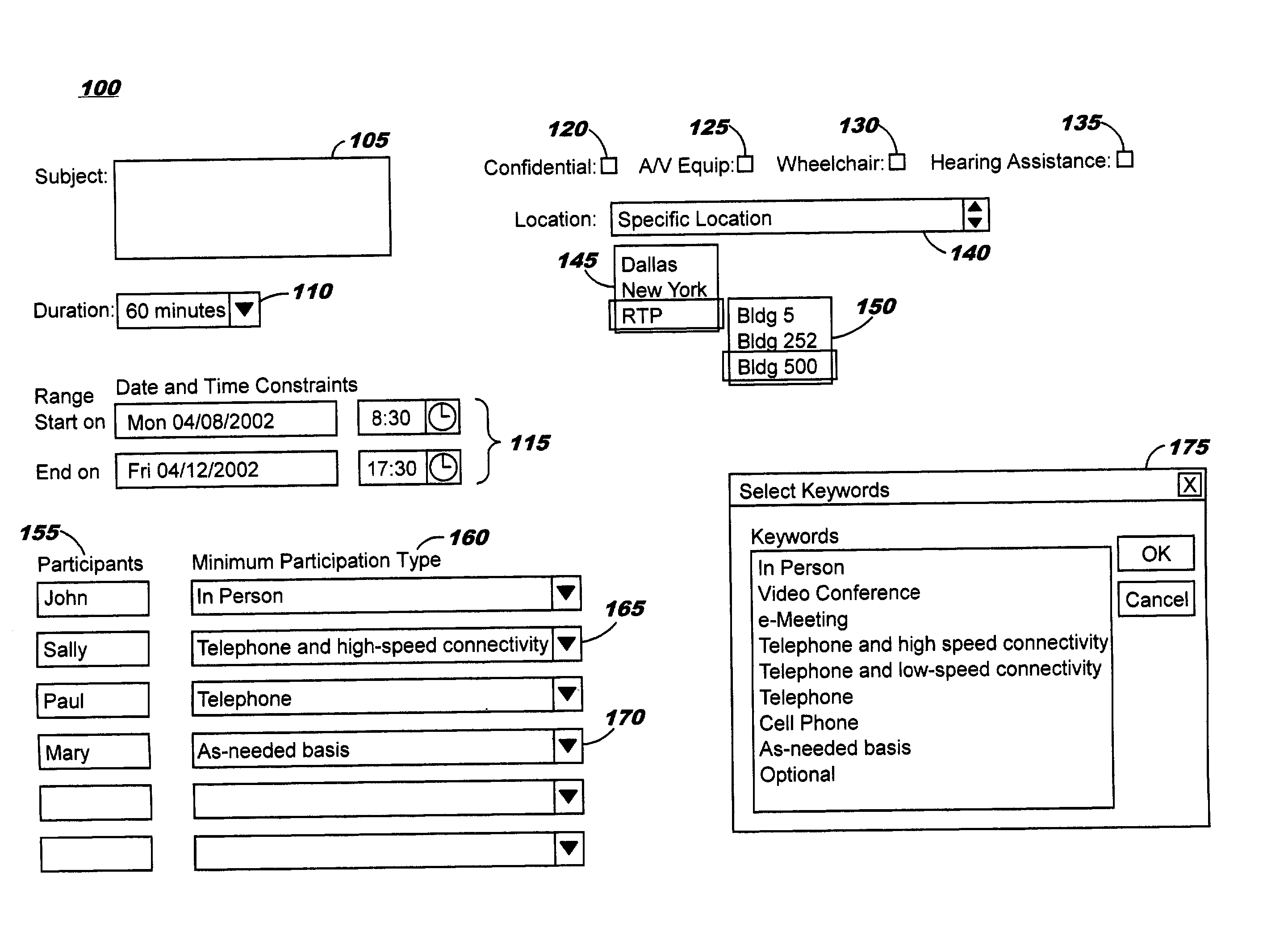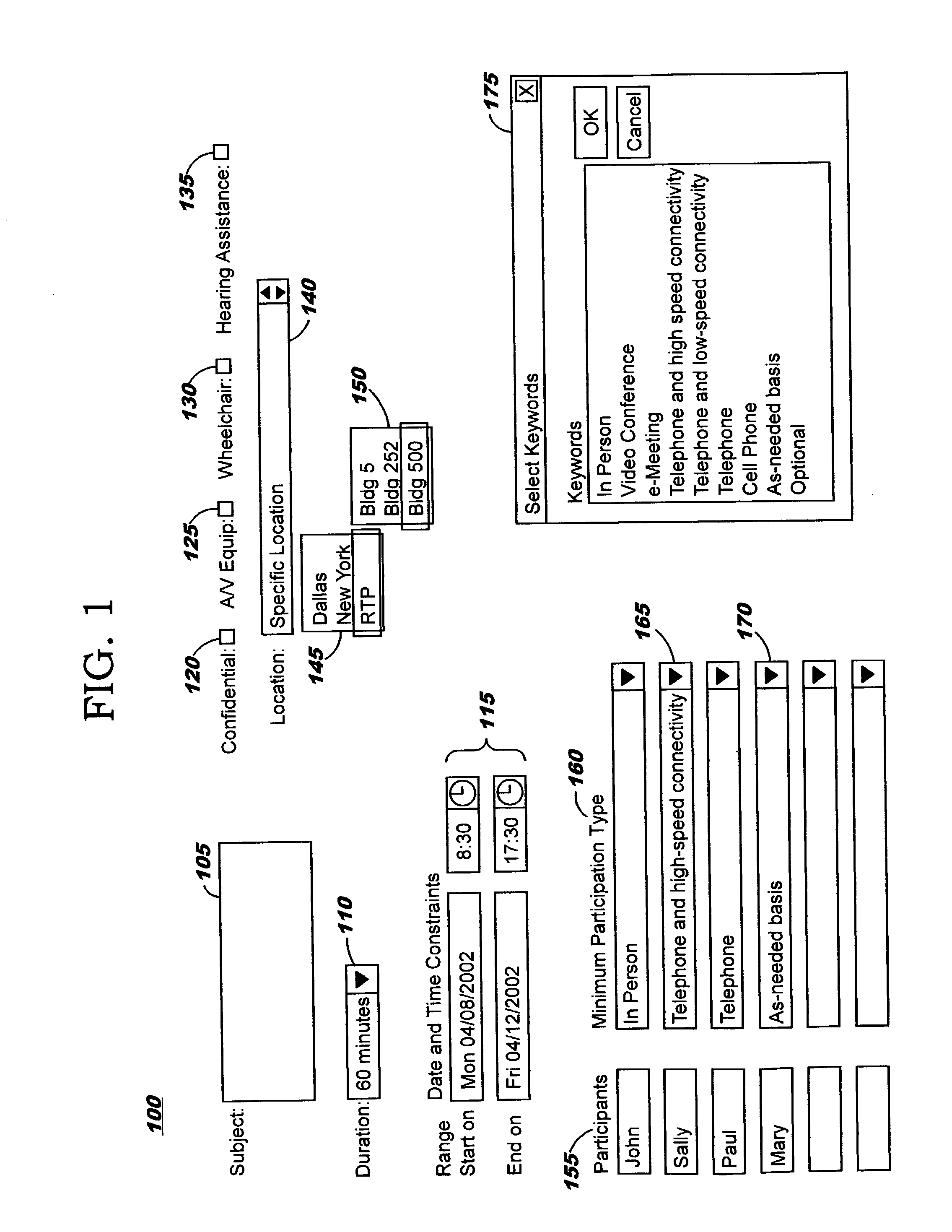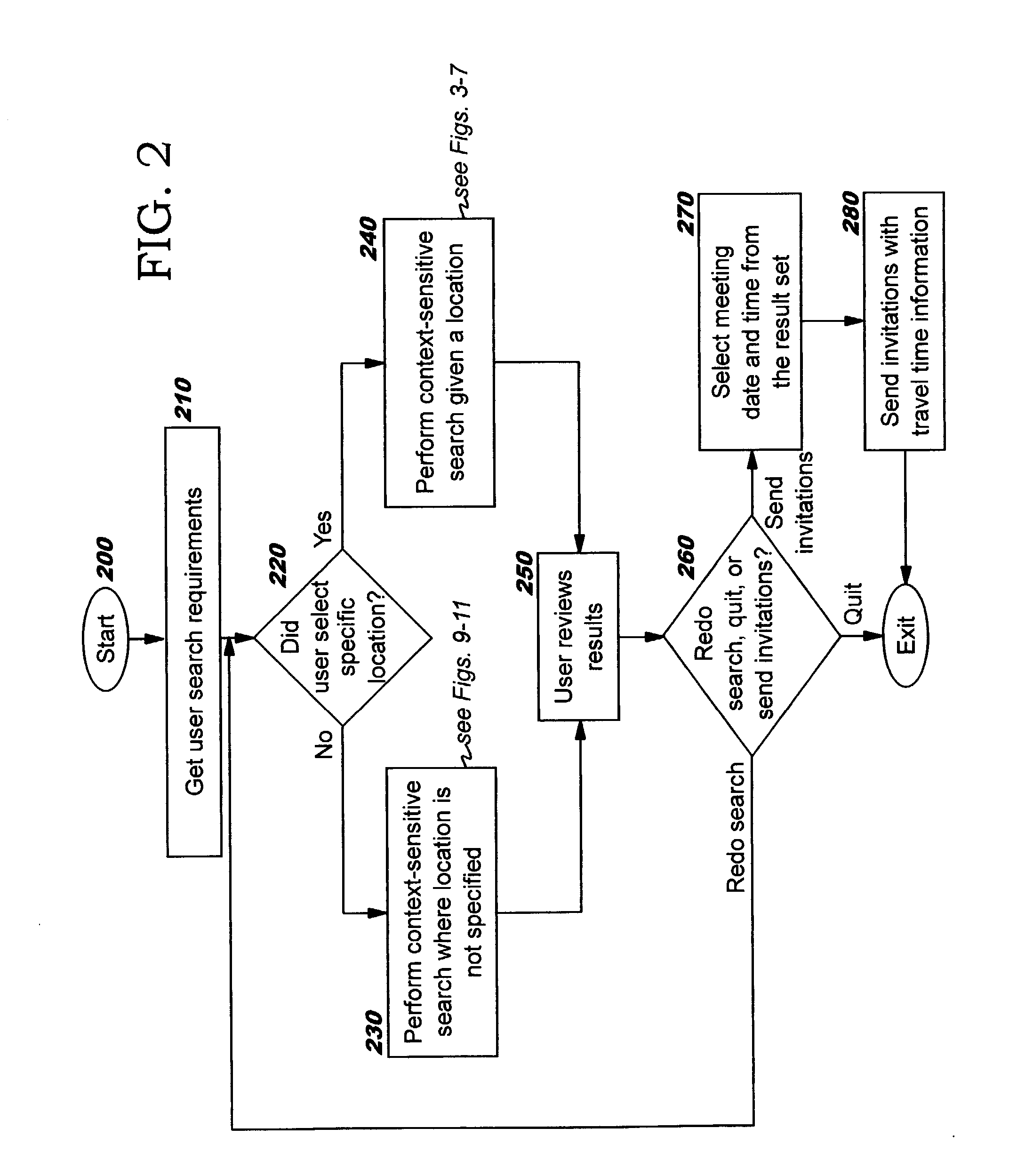Intelligent free-time search
a free-time search and intelligent technology, applied in the field of computer systems, can solve the problems of ineffectiveness in many scenarios, requiring significant manual input, and scheduling meetings between multiple people using prior art techniques is typically a time-consuming task
- Summary
- Abstract
- Description
- Claims
- Application Information
AI Technical Summary
Benefits of technology
Problems solved by technology
Method used
Image
Examples
Embodiment Construction
[0040] The present invention defines improved techniques for finding common free time, where this common free time is described herein with reference to scheduling meetings among calendar owners using information of the type used by electronic calendars. The disclosed techniques provide more intelligent searching of calendar data, resulting in improved calendar-based scheduling; thus, the terms "searching" and "scheduling" may be used interchangeably when describing advantages of the present invention. (While the discussions herein presume that a person's availability information comes from electronic calendar data, this is for purposes of illustration and not of limitation. The actual origin of the availability data may be different, without deviating from the scope of the present invention. Furthermore, preferred embodiments are described herein with reference to scheduling meetings. However, the disclosed techniques may be adapted to other uses, including but not limited to sched...
PUM
 Login to View More
Login to View More Abstract
Description
Claims
Application Information
 Login to View More
Login to View More - R&D
- Intellectual Property
- Life Sciences
- Materials
- Tech Scout
- Unparalleled Data Quality
- Higher Quality Content
- 60% Fewer Hallucinations
Browse by: Latest US Patents, China's latest patents, Technical Efficacy Thesaurus, Application Domain, Technology Topic, Popular Technical Reports.
© 2025 PatSnap. All rights reserved.Legal|Privacy policy|Modern Slavery Act Transparency Statement|Sitemap|About US| Contact US: help@patsnap.com



